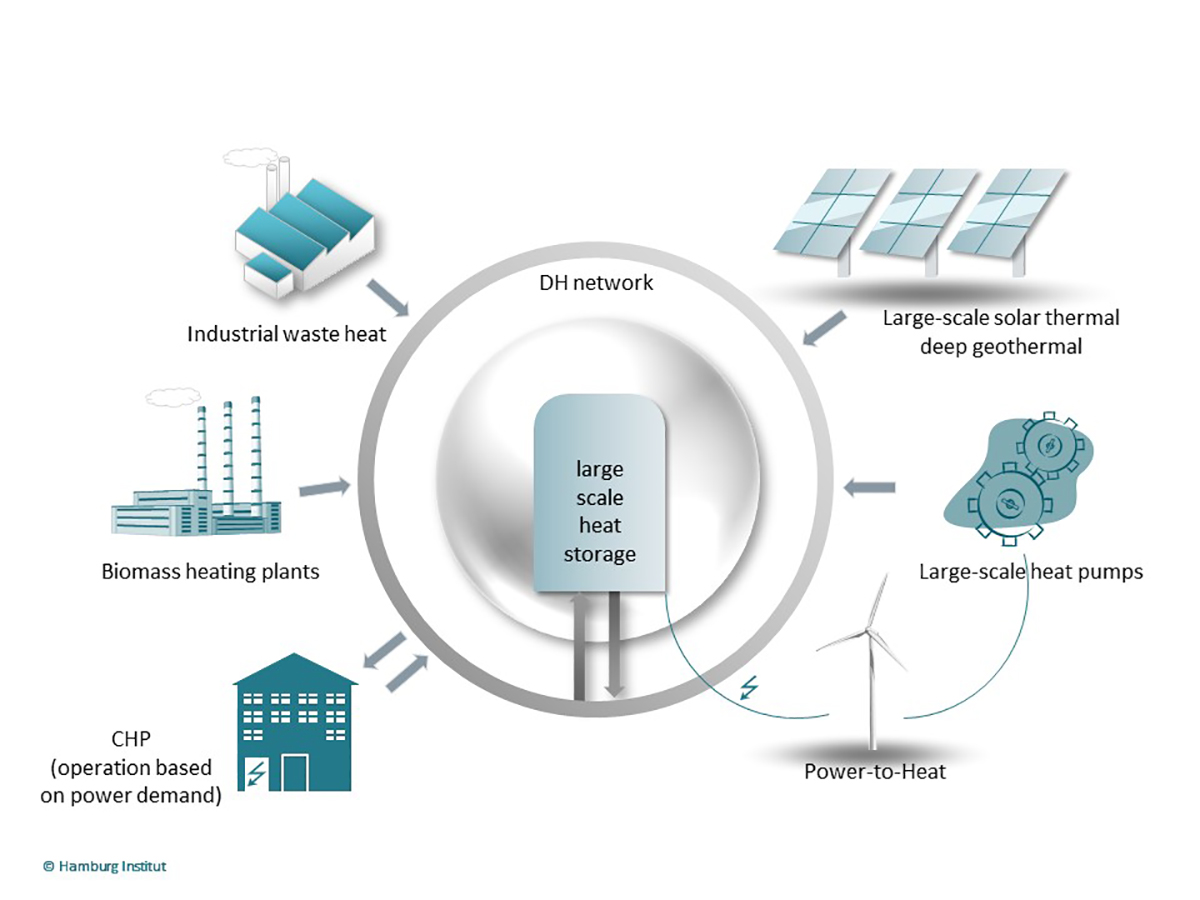District heating and cooling in cities
In European cities, DHC is well placed to make a significant contribution to the necessary energy transition and climate mitigation efforts. The EU’s ambitious targets for reducing greenhouse gas emissions by 55 % until 2030 can be achieved by improving energy efficiency and by a consistent and sustainable replacement of the fossil energy sources used today, with renewable alternatives.
In the heating and cooling sector, the existing DHC networks in Europe in particular offer enormous potential to deliver climate-neutral heating and cooling to large conurbations. At present, the required heat is generated at a central point in a heating (and power) plant and is transported to the consumers via a series of pipes. This centralised system provides an excellent infrastructure that can simultaneously supply private households, municipal properties and companies with heat and cold and offers a broad platform for the integration of all types of renewable energies and waste heat.

Transformation of district heating and cooling
A future-proof solution is to make all local resources available and to integrate them into the existing district heating and cooling networks. This transformation is a process that needs many intermediate steps. Some things to consider:
- The combination of different renewable generation technologies increases the overall efficiency of the energy system.
- Local land availability and use is crucial for the successful integration of renewables.
- Multifunctional heat storages reduce imbalances between generation and demand, due to fluctuating renewables, and can combine energy sectors.
- System efficiency can be increased by lowering the network temperatures, which reduce heat losses and favour renewable energies like solar thermal and heat pumps.
- Decentralisation of energy production and operating skills of the network are needed due to space constraints, especially in urban areas.
A number of options and combinations are available for this purpose with different, mature technologies: It is important to find the right mix and the optimal technical solutions to make the DHC networks fit for RES.
All these are challenges that have to be considered and addressed on different organizational and regulatory levels in order to achieve the set EU targets and to ensure climate protection. The EU H2020 project RES-DHC makes a significant contribution and supports the transformation process of the district heating and cooling networks in Europe.
